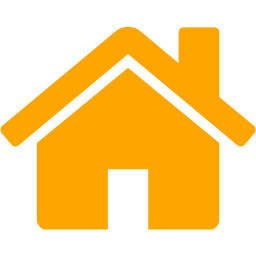| INFORMASI SITUS | ||
|---|---|---|
| NAMA SITUS | KPKTOTO | |
| PERMAINAN AVAIBLE | TOTO 4D, TOGEL ONLINE, SLOT ONLINE, TOTO ONLINE, | |
| MINIMUM DEPOSIT | Rp. 10.000 | |
| METODE DEPOSIT | TRANSFER BANK, E-WALLET, PULSA & QRIS | |
| MATA UANG | IDR (INDONESIAN RUPIAH) | |
| JAM OPERASIONAL | ONLINE 24 JAM | |
| JOIN MEMBER KPKTOTO | DAFTAR KPKTOTO | |
Kpktoto - Platform Togel Online Dengan Fleksibilitas Deposit Terjangkau
Kpktoto merupakan Platform Togel Online yang memberikan berbagai pilihan permainan togel kepada penggunanya. Platform ini dirancang dengan tujuan untuk memberikan pengalaman bermain togel yang mudah, aman, dan tentunya menguntungkan bagi para pemain. Dengan tampilan yang user-friendly, Kpktoto memungkinkan para pemain untuk bermain kapan saja dan di mana saja, hanya menggunakan perangkat yang terhubung ke internet.
Keunggulan utama yang ditawarkan oleh Kpktoto adalah Fleksibilitas Deposit yang sangat terjangkau. Hal ini menjadi nilai lebih karena banyak pemain yang khawatir dengan besarnya nominal deposit yang diperlukan untuk mulai bermain. Di Kpktoto, pemain bisa melakukan deposit dengan jumlah yang lebih rendah, sehingga memudahkan mereka yang baru ingin mencoba peruntungan dalam bermain togel online.
Menerima Semua Metode Pembayaran Deposit Bank Local
Kpktoto memberikan banyak pilihan metode pembayaran, mulai dari transfer bank, e-wallet, hingga pembayaran menggunakan pulsa, yang tentunya semakin mempermudah proses deposit. Jadi, baik pemain baru maupun pemain lama bisa memilih metode pembayaran yang paling sesuai dengan kebutuhan mereka. Selain itu, platform ini juga menyediakan berbagai macam promo dan bonus menarik yang bisa didapatkan oleh pemain. Dengan fleksibilitas deposit yang terjangkau, pemain bisa lebih leluasa dalam mengatur strategi dan budget mereka untuk bermain.
Untuk semakin meningkatkan kenyamanan dan kepuasan para pemain, Platform Kpktoto juga menyediakan berbagai bonus dan promo menarik. Beberapa jenis bonus yang ditawarkan antara lain adalah bonus deposit pertama, bonus referral, hingga berbagai promo spesial yang berlangsung di waktu-waktu tertentu. Promo-promo ini memberikan kesempatan lebih besar bagi pemain untuk memperoleh keuntungan lebih banyak.
Beragam Pilihan Togel dan Fitur Menarik
Kpktoto menawarkan beragam jenis permainan togel yang bisa dimainkan, mulai dari togel 2D, 3D, 4D, hingga berbagai jenis taruhan lainnya. Semua permainan ini dirancang dengan mudah dimengerti, sehingga baik pemain pemula maupun yang sudah berpengalaman bisa langsung bermain tanpa kesulitan.
Selain itu, Kpktoto juga menyediakan berbagai fitur menarik seperti live draw, yang memungkinkan pemain untuk melihat hasil togel secara langsung dan real-time. Fitur ini tentu menambah keseruan dan transparansi permainan. Dengan adanya live draw, pemain bisa merasa lebih yakin karena hasil undian togel dilihat langsung, tanpa adanya kecurigaan akan manipulasi hasil.
Dengan fleksibilitas deposit yang terjangkau, beragam pilihan Permainan Togel, serta keamanan yang terjamin, Kpktoto merupakan pilihan yang tepat bagi para penggemar togel online. Platform ini sangat cocok untuk pemain pemula yang ingin mencoba bermain togel dengan modal yang terjangkau, maupun pemain berpengalaman yang ingin mencari pengalaman bermain togel online yang lebih seru dan menguntungkan.
 HOME
HOME
 LOGIN
LOGIN
 DAFTAR
DAFTAR
 PROMO
PROMO
 LIVECHAT
LIVECHAT